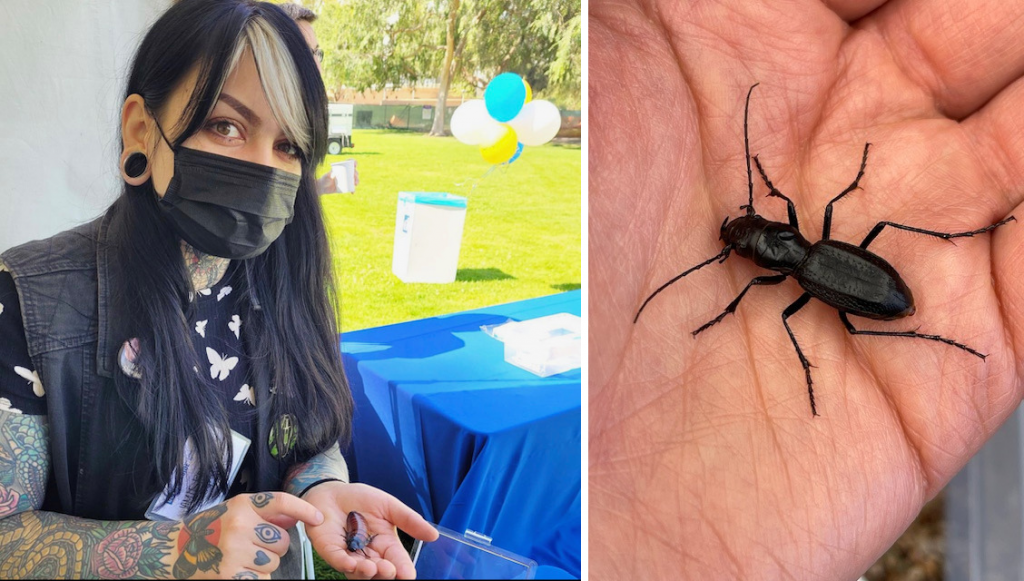Editor’s note: Three NAU students were selected for the National Science Foundation’s Graduate Research Fellowship Program. Each was profiled in The NAU Review in recent weeks. Read about Victoria Wiley and Laura Lee.
“Growing up, I spent a lot of time outside, and I have loved the insects I met along the way.”
Ph.D. student Jamie Ramirez has turned her childhood love of insects into a successful academic career—so successful that she was selected as one of this year’s National Science Foundation Graduate Research Fellowship Program (GRFP) winners.
The program awards funding to graduate students in support of their research in science, technology, engineering and mathematics disciplines. Ramirez and NAU’s other two GRFP recipients are among 2,000 students selected nationwide.
Ramirez’ research focuses on the largest tiger beetle genus in North America, Amblycheila, found in the southwestern United States. The beetle, which can grow as large as 1.4 inches long, is a favorite among insect collectors for its size and its unique lifestyle as a nocturnal predator.
For Ramirez, the giant tiger beetle holds a different kind of interest: It can be used as a bioindicator of forest health.
“By studying the giant tiger beetle, we can determine if an area or another species may be of conservational concern,” she said. “This is important because models predict that global warming will have a greater impact in the Southwest than the rest of the U.S.”
Ramirez also noted that areas of high elevation are likely to be more affected by climate change than areas of lower elevation. The giant tiger beetle, which lives throughout the Southwest at a variety of elevations, including on the more than 6,000-foot-high Madrean Archipelago—or Sky Islands—near Tucson, can help scientists learn how climate change impacts these different elevations.
Turning interest into action
Ramirez partially attributed her love of insects to the PBS and David Attenborough documentaries she watched growing up. “One thing I learned from them was to pay attention to the tiny worlds that go overlooked as they tend to be the most interesting.”
Her passion for entomology had been ignited, but Ramirez said she didn’t get much support at home for her academic pursuits. Feeling that it was important that she live her life to its fullest, she decided to cultivate her own stability. Ramirez obtained her cosmetology license in 2008. Since then, she has worked as a hairdresser, taught hairdressing to others and continued her education.
“Working may have made it take longer for me to get to this point in my academic career, but it allowed me to support myself,” Ramirez said.
Although it is a lot of work, Ramirez enjoys her time as both an entomologist and a hairdresser. She said the skills she learned from owning a small business turned out to be transferrable to her graduate research.
“Owning a small business has taught me effective time management and knowing what my limits are. I have a better understanding of how to set realistic expectations and how to break up larger goals into smaller ones.”
Now that she has received the GRFP award, Ramirez said she will be able to focus on her research without having to stress about finances. Her goal is to obtain a teaching position, continue research on the Sky Island systems and guide future generations of entomologists in their research.
“I want to inspire others to overcome the obstacles life has put in their way to accomplish their goals.”
Jessica Clark | NAU Communications
jessica.clark@nau.edu




